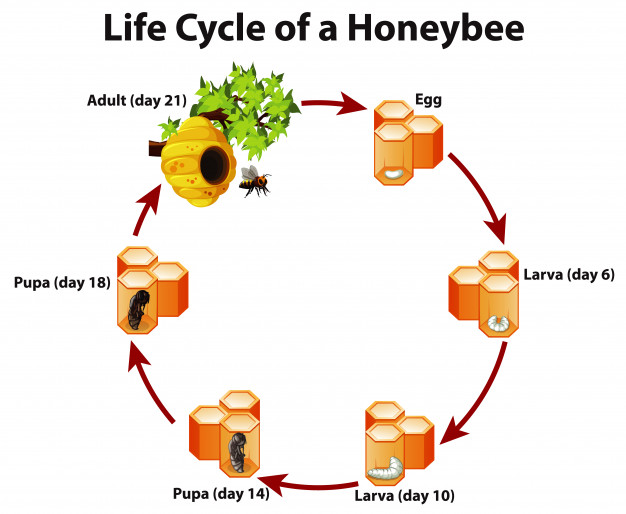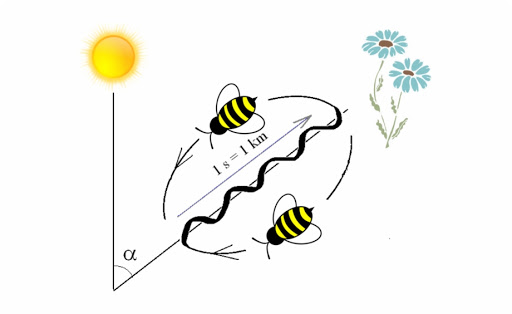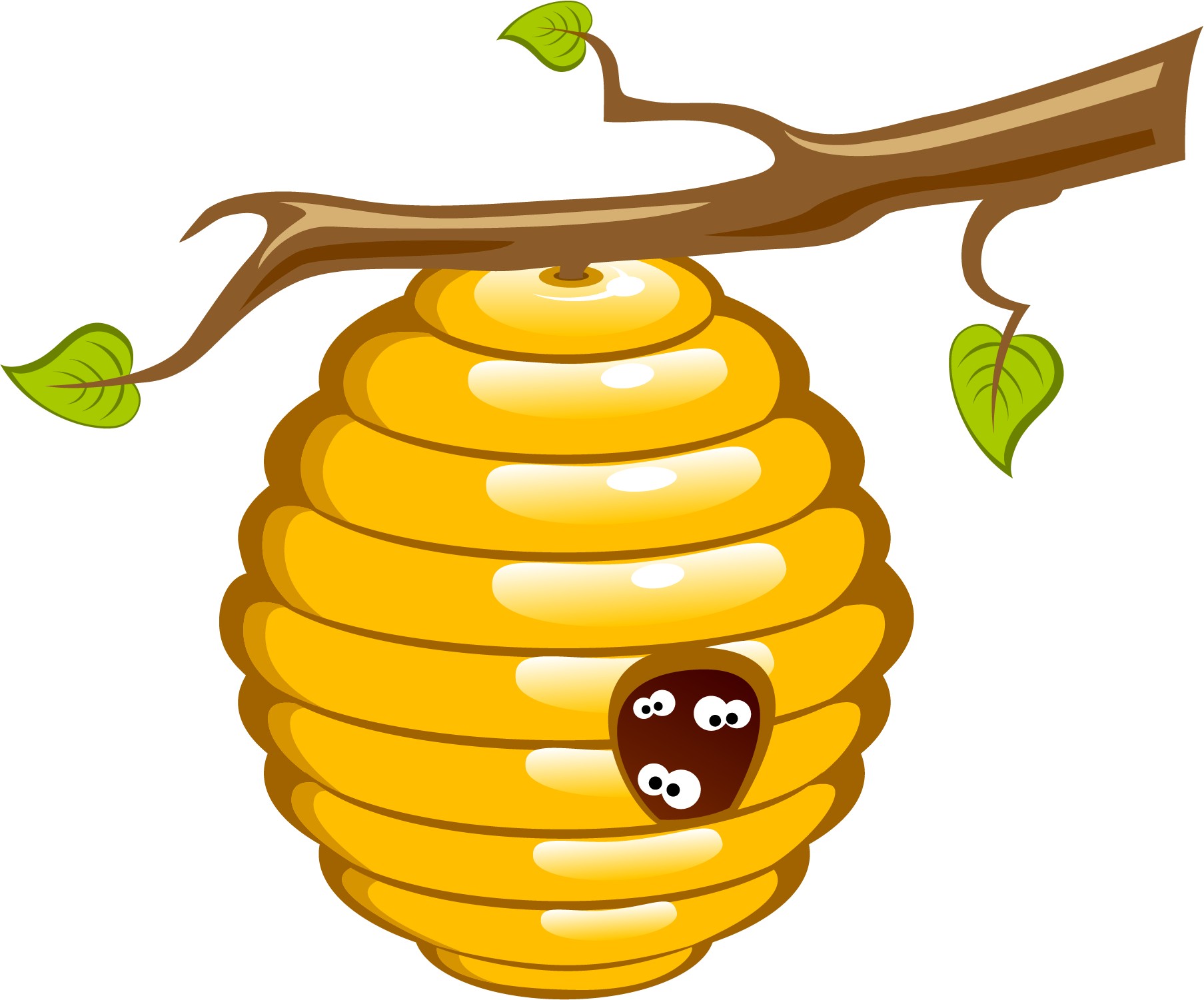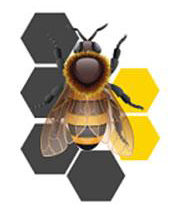The first honeybees arrived from England in 1822, aboard a ship called the “Isabella” and adapted to Indian conditions. Later honeybees arrived from Italy, Yugoslavia, and North America. The honeybee is one of the most amazing creatures in the insect world. The complex social system of the beehive that organises up to 40,000 individuals into a single proactive unit has fascinated mankind for centuries. The bee’s body is relatively delicate, life expectancy is short and enemies are many. Yet these daunting drawbacks are shrugged off as the bee goes about the daily task of collecting nectar and pollen from flowers to take back to the hive so that future generations of bees can thrive.
The honey bee begins life as an egg. The queen lays eggs, but only the "worker" eggs are fertilised with the drones’ sperm and develop into females. Queens are not hatched as queens; they become so when fed royal jelly, a substance produced by the hypopharyngeal glands of the workers.
Eggs hatch in 72 hours into larvae that are known as grubs. All the grubs are fed royal jelly at first, but only the future queens are continued on the diet. When fully grown, the grubs transform into pupae. These pupae develop through a process called metamorphosis into fully grown workers (emerge in 21 days), drones (emerge several days after the worker bees) and queens (emerge within 16 days). As there is only one queen for each hive, about a week before the new queen is hatched, the old queen is prepared for leaving the hive. Just before the new queen emerges, the old queen leaves taking with her at least half the workers and drones.


Bees cannot talk to each other so they communicate through dances, vibrations, and body chemical signals. The scout bees have the task of finding new pollen, nectar and water sources, once they have sourced these they return to the hive and perform either a round or waggle dance across the honeycomb. To indicate distance exactly, the scout bee uses an audible code of buzzes on a 200 cycle per second note with a pulse rate of 35 to a second.
The Round dance is performed when the food source is within a hundred metres of the hive. Wings vibrate swiftly as the bee dances in a circle and then turns and runs the other way. The wagtail dance is performed if the source is further away.
Swarming is the natural method used by honeybees to survive or multiply. When a swarm issues from a colony it contains the old queen and about 50% of the adult honeybees. A swarm is often seen clustered in a tree or a shrub and within a few hours scout honeybees have found a new home for them to settle. The honeybees then produce new honeycombs to store food and provide cells for the queen to recommence laying eggs. In the meantime, the original hive houses a new queen ready to take over after the swarm has left.
The hive contains up to 40,000 bees, each having a role in the smooth running of the hive, which is divided into two sections – the honey super, on top and the brood chamber, or nursery, underneath.
The honey super contains eight or ten frames on which the bees build honeycomb. The frames can be removed one at a time when the comb is full of honey. The brood chamber also contains honeycomb, but its cells are not usually as deep as those in the super because they are used exclusively for egg laying and brood rearing. This is where the queen bee usually lives and lays her eggs here. The comb is white when new and becomes yellow as it absorbs pollen during food storage. It tends to darken in the brood chamber after it has been used to raise many generations of honeybees.
Hive temperature is maintained at about 34 degrees C. The bees eat more honey to provide energy to warm themselves in cooler times, and in warmer weather, they bring water into the hive in their honey stomachs and use their wings to fan moisture off the honeycomb to reduce the temperature. Bees zealously guard their hives against intruders, with the older workers doing guard duty at the hive entrance. The main intruders are other insects, including bees from other hives that may be short of honey, and, of course, beekeepers who always wear special protective clothing removing honey from the hive.
The main defence mechanism is the sting, which is fatal for the bee that delivers it. But the bees repel ants by a combination of kicking and fanning the air with their wings.

There are three castes of bees in each colony, a queen, drones and workers. Each of the castes are interdependent and rely on each other for survival.

The workers are female bees who do not normally lay eggs. They are 13-17mm long and they live for about six weeks (during the peak of the season) and perform many tasks throughout their lives. Their first task is that of a hive nurse who cleans and caps cells, feed the drones, queen and brood. Later they store and receive nectar from other workers, pack pollen, build honeycomb and clean the hive. Later in life they become honey ripeners and hive guards, preventing foreign insects from entering the hive.
Finally they become foragers. Foragers search for and collect nectar, pollen and water for the colony. They have a long mouthpiece called a proboscis, for sipping the nectar and water that nourish the bees in the hive and provide us with honey.
The queen is the largest bee and each colony has just one, whose sole purpose is to lay eggs – hence her large abdomen. The queen bee has one mating period in her life, during this time she leaves the hive and mates with 7 to 10 drones usually from other colonies before returning to the hive, so her wings are smaller than the worker’s. After a few days the queen returns to the hive, storing the sperm in her abdomen. She then begins to lay her eggs. During this time she is cleaned and fed by the worker bees so she can spend all her time laying eggs.
The queen lives for about two to four years, however beekeepers like to replace them after a year as they tend to produce more eggs in the first year.


The drones are stingless male bees that are shorter than the queen and twice as heavy as the worker, they also have larger eyes and antennae than the females. These help it succeed in its only task – locating and mating with the queen during flight.
The drones die instantly after they have mated with a queen. Usually there are only a few hundred drones in a hive and they may be evicted at the beginning of winter when breeding ceases.
Call or Message us on: +91-8685020202
We are here to help you 09:00 AM to 09:00 PM ! Do not hesitate to ask us anything.